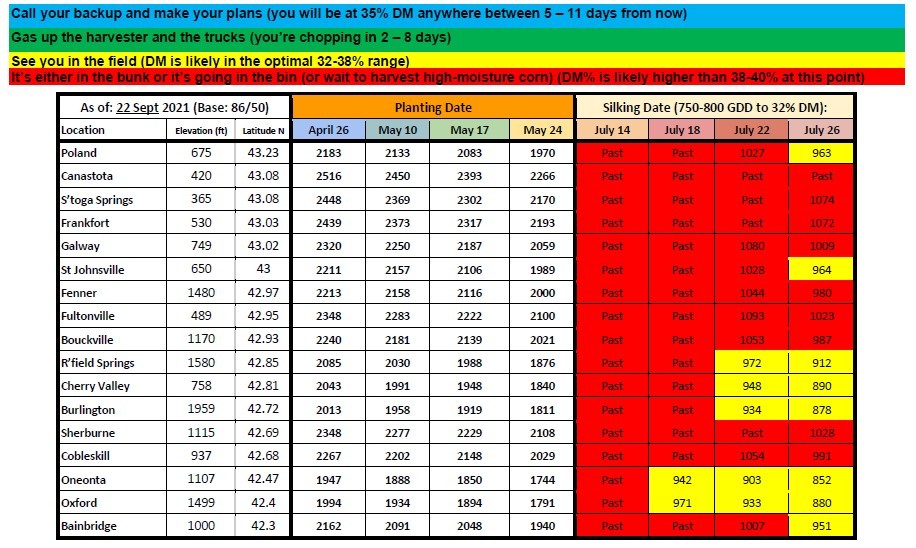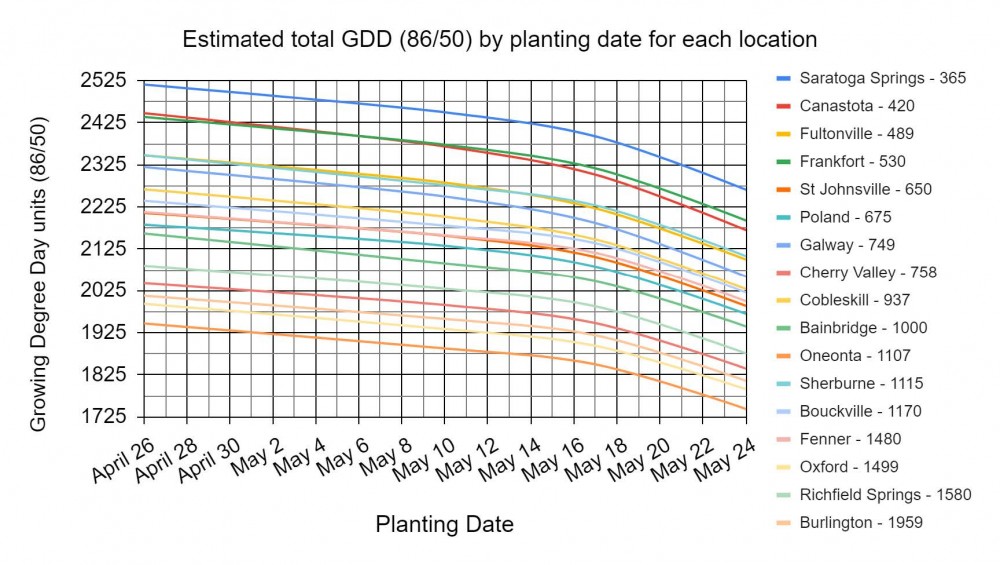Field Crop Update, September 24, 2021
Erik Smith, Area Field Crop Specialist
Central New York Dairy and Field Crops
1. Field Observations
The days are getting shorter, and so is the weekly update….
Lots of silage and hay acreage has been harvested over the last week, so attention is turning to soybean harvest. Some group 0 crops have been harvested in western NY already, and I've seen a lot of acreage in our central region that may be ready soon as well.
And once again, take note of problem areas in your soybean fields and let me know if you would like me to sample your field for soybean cyst nematode (it's free!). This pest is widespread in NY, and I'm afraid that this year's wet conditions may have allowed them to spread more easily through infested fields. Knowing the level of infestation in your field will help you make sound management decisions, whether it's choosing a resistant variety or rotating out of that field for a few years. Sampling and analysis are free via grant funding from the NY Corn and Soybean Growers Association, though I am limited in the number of samples I can submit. So let me know.
Whether you're an agribusiness that harvests dozens of fields each year or a private farmer that might pitch in with your neighbor's harvest, here's another reminder about the importance of cleaning your combine! As outlined in this study, weed seeds don't always make it to the grain tank - your combine head and feeder house can trap (and transport) ~80% of the weed seeds that collect in either the head, feeder house, stone trap, or the rotor. Check out that link for more details on that study, and Weed Seed Management at Crop Harvest.pdf (wiscweeds.info) for a deeper dive into what weeds may be trapped, and where they will show up.
2. Growing Degree Days (GDD) for planting date and silking date (Climate Smart Farming Growing Degree Day Calculator)
For corn silage, we are using base 50/86, as corn development starts at 50F and ceases above 86F. Silage corn needs 750-800 GDD (depending on hybrid maturity) after silking to reach a whole plant DM of 32%. Remember that we can expect to accumulate 20-25 GDD per day, or even up to 30, so this is not a large window. Under typical late season dry down conditions we can expect the crop to reach 35% DM four to seven days later. Check your crop to see how close you may be to harvest:

Not everyone planted their corn on one of the planting dates or in one of the locations I have listed, so this chart shows the estimated GDD for each location on each potential planting date in between (based on the actual GDD on those four dates). The locations are ordered top-to-bottom from lowest elevation to highest (the number after the location name is the elevation in feet above sea level). So if your farm is near one of the locations on this list but there's a location here that more closely matches your elevation, try that instead. You can find GDDs for your own specific location and planting date using the Climate Smart Farming CSF Growing Degree Day Calculator, but for those who might have more difficulty using that tool, maybe this chart can help.

Field Crop Update, September 24, 2021 (pdf; 514KB)
Upcoming Events
DEC Pesticide Applicator Exam
April 19, 2024
Morrisville, NY
New York State Fiber Conference
June 9, 2024
Bouckville, NY
Theme for this year: Quality Matters
Announcements
Cash Rent and Custom Harvest Survey
To date, there is limited information available about rental rates and fees for crop harvesting. Farms can use this valuable information for their farm business planning to help improve decision making and profitability.Farmers Can Join MeatSuite For Free!
MeatSuite.com is a free resource provided by Cornell University where NY meat farmers can create a farm profile and list their bulk (wholes, halves, quarters) and bundled (i.e. Grilling Bundle) meat products.Why should farmers join?
1. It's free and easy!
2. Connect with more local customers. In the past year the MeatSuite.com farm directory had 8,300 visits from New York consumers. Farm profiles get as many as 25 views per month from potential local customers. We also spotlight MeatSuite farms on social media and bring attention and purchases to farms through highlights and giveaways.
How do I join?
Farmers can visit https://www.meatsuite.com/farmers/ to create a free farm profile. You must list at least one product for your farm's profile to go live. You'll also have access to Cornell's free Meat Price Calculator, a helpful tool for pricing your meat to make a profit.
While you're on MeatSuite, check out the "Creating Consumer-Friendly Bulk Meats" publication on the log-in page. It has tips on how to create bulk meat products that are easier for first-time buyers to say "yes" to.
If you have any questions as you create your farm profile or products, we're here to help! Please email Matt LeRoux at mnl28@cornell.edu.




